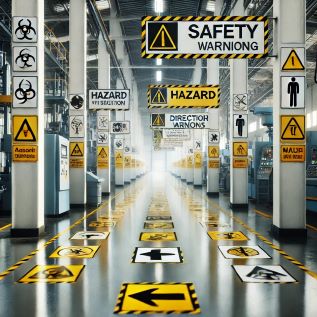
Maximizing Safety in Industrial Environments: Mastering Speed and Braking Controls
July 18, 2022
Boosting Workplace Safety: Effective Strategies to Prevent Forklift Accidents
July 18, 2022
Maximizing Safety in Industrial Environments: Mastering Speed and Braking Controls
July 18, 2022
Boosting Workplace Safety: Effective Strategies to Prevent Forklift Accidents
July 18, 2022In today’s dynamic industrial landscape, maintaining a safe work environment is crucial. Recent data from the Association of Workers' Compensation Boards of Canada highlight a concerning rise in workplace fatalities and injuries. For businesses, ensuring a safe workplace is not just a legal obligation but a moral imperative, demanding continuous vigilance and improvement.
Recognizing and Addressing Industrial Risks
The increase in workplace incidents is a stark reminder of the hazards inherent in many industrial settings. Young workers, in particular, are at greater risk, emphasizing the need for businesses to strengthen their safety protocols and take immediate, decisive action.

Building a Safety-First Culture
Comprehensive Safety Audits
Understanding every aspect of your work environment is essential. Regular safety audits, risk assessments, and consultations with team leaders can identify potential hazards and facilitate a proactive approach to managing them.
Continuous Training and Orientation
Implementing thorough safety orientation for new hires and providing ongoing training sessions ensures that all employees stay informed about the latest safety practices and understand their role in maintaining a secure workplace.
Hazard Identification and Education
Educating workers about specific hazards prevalent in the manufacturing sector is crucial. This awareness forms the foundation of an effective safety program and aids in developing targeted risk mitigation strategies.
Integration of Safety Protocols
Incorporating safety measures into daily operations transforms safety guidelines into an integral part of the corporate culture, making adherence to these protocols a natural, intuitive process.
Implementing Sustainable Safety Strategies
Strict Lockout/Tagout Procedures
Ensuring that machinery is fully deactivated during maintenance is vital to worker safety. This protocol prevents accidental machine activation, which is a significant risk in industrial settings.
Robust Emergency Protocols
Developing and clearly communicating comprehensive emergency action plans ensures a structured response to emergencies, reducing confusion and potential harm during critical situations.
Formation of a Safety Committee
Creating a dedicated safety committee with representatives from various departments can significantly enhance safety focus. Regular meetings to review and update safety policies ensure that the organization remains responsive to new safety challenges.
Investment in Security System Automation
Factories benefit from stringent access controls and monitoring. Automated security systems with surveillance and authentication features can greatly enhance the overall safety and security of the facility.
Creating a safer industrial workplace involves a multifaceted approach that blends awareness, training, and technological investment. By embedding safety into the corporate culture and addressing risks proactively, businesses can foster a secure environment for all employees. For specialized support in industrial safety products and expert advice on signage and workplace safety, visit EZSecur at www.ezsecur.com.





